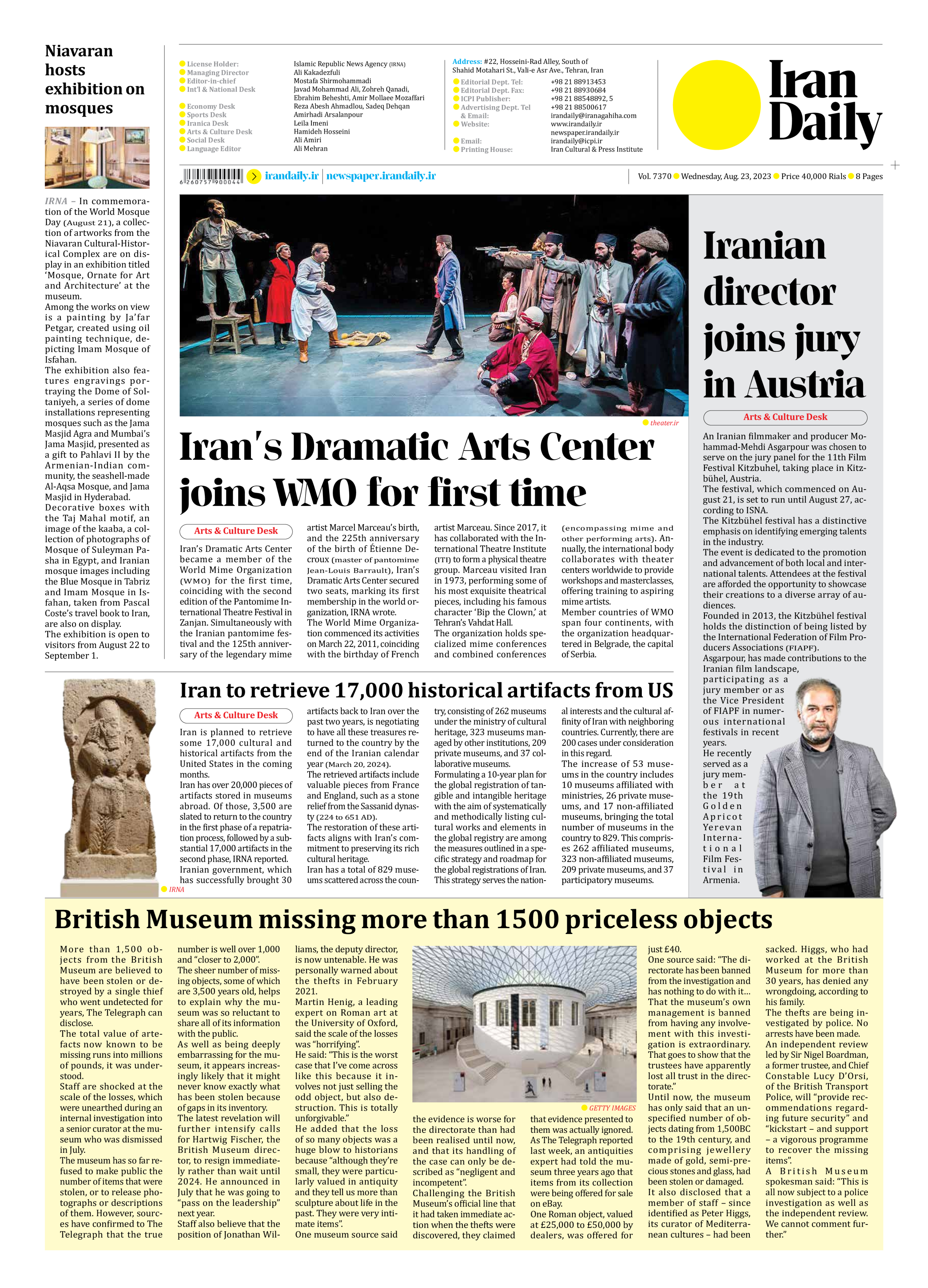
Iran to retrieve 17,000 historical artifacts from US
Iran is planned to retrieve some 17,000 cultural and historical artifacts from the United States in the coming months.
Iran has over 20,000 pieces of artifacts stored in museums abroad. Of those, 3,500 are slated to return to the country in the first phase of a repatriation process, followed by a substantial 17,000 artifacts in the second phase, IRNA reported.
Iranian government, which has successfully brought 30 artifacts back to Iran over the past two years, is negotiating to have all these treasures returned to the country by the end of the Iranian calendar year (March 20, 2024).
The retrieved artifacts include valuable pieces from France and England, such as a stone relief from the Sassanid dynasty (224 to 651 AD).
The restoration of these artifacts aligns with Iran’s commitment to preserving its rich cultural heritage.
Iran has a total of 829 museums scattered across the country, consisting of 262 museums under the ministry of cultural heritage, 323 museums managed by other institutions, 209 private museums, and 37 collaborative museums.
Formulating a 10-year plan for the global registration of tangible and intangible heritage with the aim of systematically and methodically listing cultural works and elements in the global registry are among the measures outlined in a specific strategy and roadmap for the global registrations of Iran. This strategy serves the national interests and the cultural affinity of Iran with neighboring countries. Currently, there are 200 cases under consideration in this regard.
The increase of 53 museums in the country includes 10 museums affiliated with ministries, 26 private museums, and 17 non-affiliated museums, bringing the total number of museums in the country to 829. This comprises 262 affiliated museums, 323 non-affiliated museums, 209 private museums, and 37 participatory museums.







